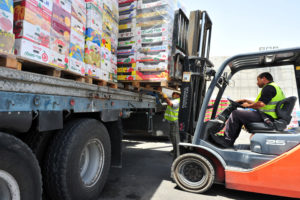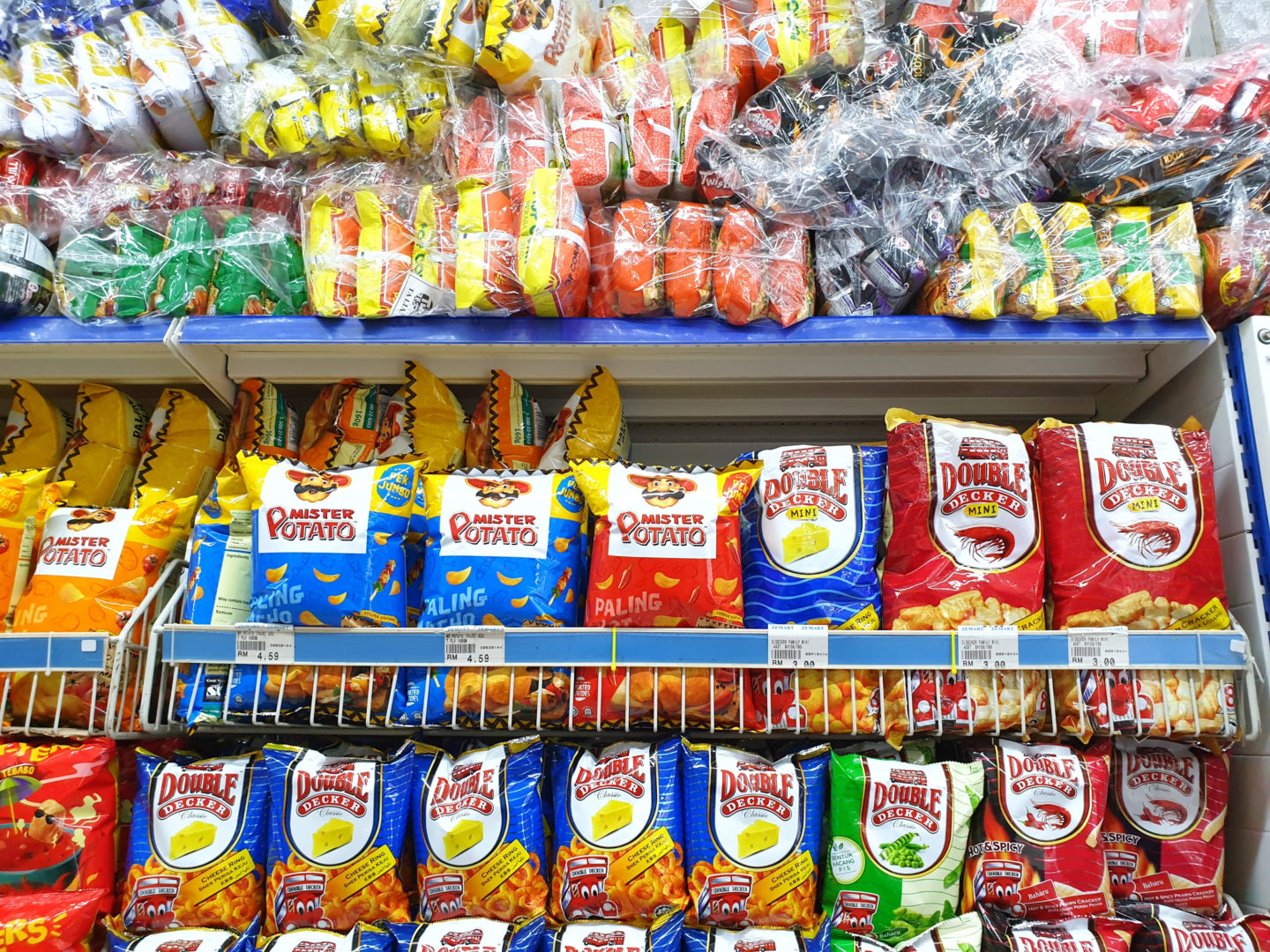carbon calculator

Food Packaging
Data Collection
Every day during a (normal) school year, thousands of students throw away packaging waste from their school lunches, without realizing its toll on the environment. The calculators on this page will help illuminate and quantify this impact for you by giving you a concrete number of the emissions produced from your school’s trash.
The first step is to collect data on the type and amount of food packaging your school uses. Input the following information into each column in Table 1:
- Column 1 – packaging materials that your school uses. We’ve already listed common packaging items in the table, but add to the list if any items your school uses aren’t present.
- Column 2 – how much of each item your school uses per school year. You can try calculating how much of each item your school uses per day, and then multiply that by how many days are in your school year. It’s okay if you have to estimate.
- Column 3 – the average weight (in kg) of each item. To find the average weight of a packaging item, weigh 10 to 25 of the item and then calculate the average weight (the more times you measure the item, the more accurate the average will be). You can do this by going through the trash, finding your item, cleaning it, and weighing it.
*Note: If your school uses packaging items that are not listed in Table 1, you can add more items by simply clicking “Add Another.” A new row will be added to Table1 and Table 2. Please note that in the “CO2 Impact” column in Table 2 you will have to add the amount of CO2 produced per kg of the item. This value can likely be found by a google search.
Table 1
| Item | Number used per year | Average weight of one (determined by sampling) in kg | Total weight (kg) |
|---|---|---|---|
| Plastic Bag | |||
| Cardboard | |||
| Aluminium Foil | |||
| Plastic Containers | |||
| Utensils | |||
| Paper Bag |
Calculations
Table 2| Item | CO2 Impact | Total weight | CO2 emissions (kg) |
|---|---|---|---|
| Plastic Bag | kgs CO2 per kg of Plastic Bag | ||
| Cardboard | kgs CO2 per kg of Cardboard | ||
| Aluminium Foil | kgs CO2 per kg of Aluminium | ||
| Plastic Containers | kgs CO2 per kg of Plastic Containers | ||
| Utensils | kgs CO2 per kg of Utensils | ||
| Paper Bag | kgs CO2 per kg of Paper Bag |
Based on the data you entered into Table 1, Table 2 automatically calculated the carbon emissions produced from each packaging item! Please note that if you added a new packaging item to Table 1, you will have to add the amount of CO2 produced per kg of the item into the “CO2 Impact” column in Table 2. This value can likely be found by a google search.
How were the emissions calculated?
The emissions value was found by multiplying the item’s total weight (in kg) by the amount of CO2 produced for every kg of the item.
Table 3
| Item | CO2 Emissions (converted to lbs) |
|---|---|
| Plastic Bag | |
| Cardboard | |
| Aluminium Foil | |
| Plastic Containers | |
| Utensils | |
| Paper Bag | |
| Total |
| Total C02 emissions (lbs) | / | Number of students in your school | = | Carbon dioxide produced per student (lbs) |
|---|---|---|---|---|
| / | = |
In Table 3, the CO2 emissions of each item are added together to get the total CO2 emissions. You can input the number of students in your school to find out how much CO2 was produced per student. This is important because, for instance, one school may have a much larger carbon footprint than another school, but this could simply be due to the size of that school. By dividing by the number of students, the school’s size no longer becomes a factor.
You’re done! Go to the “Ways to Proceed” tab to see what you can do next.
Keep in mind….
Some of the items may have a low environmental impact in their production, but it is important to look at the entire lifecycle of each particular type of packaging. For instance, it has a significantly lower environmental impact to make a plastic bottle than to make a paper cup, plastic is one of the biggest pollutants of our planet and is creating all sorts of unprecedented challenges for our oceans. The reason paper is ultimately better in the long run (as of right now) is because it is biodegradable whereas plastic is not. And though plastic can be recycled, of the plastic waste produced between 1950 and 2015, only 9 percent was recycled because only certain types of plastics can be recycled and there could be even fewer types of plastics recycled depending on where your school sends its recycling (assuming your school does recycle).

Transportation
Want to know the environmental impact of transportation at your school? From school buses to food delivery trucks, this calculator will help you quantify the eco impact of any vehicle!
Below is the information you should put into each column of Table 1. Once you input your data, the emissions amount will appear in Table 2.
Data Collection
Fill in Table 1 (below the Key) with the following information:
- Column 1 – if you’re calculating the emissions from the transportation of your school’s food, you can input the restaurant(s) and/or place(s) where your food comes from here.
- Column 2 – the type of vehicle (school bus, van, etc). If you’re calculating the emissions from a food delivery vehicle and don’t know what vehicle is used, try asking a staff member that serves hot lunch, or directly reach out to the company/restaurant that provides the lunch to find out.
- Column 3 – the miles per gallon the vehicle gets. There’s a key below with the miles per gallons (mpgs) for some common vehicles, but if your delivery vehicle isn’t on the list you can do a google search or follow this link to get MPGs for different vehicle types.
- Column 4 – the amount of miles the vehicle drove to get to your school. You can find this data by using google maps and inputting your school and the vehicle’s stops or the location it came from to find the distance between them. If you want to know the carbon emissions that the vehicle produced round-trip multiply the amount of miles by two.
| Vehicle Type | Amount of miles per gallon |
|---|---|
| Toyota Van | 19.6 |
| Mercedes Van | 22 |
| Ford Van | 14.4 |
| Average Van | 24 |
| School Bus* | 5 |
Table 1
| Restaurant (or food source) |
Delivery Vehicle Type |
Fuel Type | Vehicle miles per gallon |
Miles traveled |
|---|---|---|---|---|
Calculations
Table 2 (below) will take your data and calculate the carbon dioxide emissions! You then have the option to divide the total emissions by the number of students in your school to see how much CO2 is emitted per student on average. This serves as an equalizer if you’re comparing your school’s footprint to the footprint of another institution due to how they may vary in size (a larger school could be more efficient than a smaller one but produce more emissions, so dividing by the number of students puts the footprint into perspective).
Also, keep in mind that you’ve probably just calculated the emissions produced in a day’s worth of transportation at your school, so you can multiply your emissions value by the amount of days in a school year to get the year-long environmental impact.
Table 2
| Vehicle Type | Amount of miles per gallon | Miles Traveled | Total gallons used | CO2 emissions (lbs) |
|---|---|---|---|---|
| Total | ||||
| Total C02 emissions (lbs) | / | Number of students in your school | = | Carbon dioxide produced per student (lbs) |
|---|---|---|---|---|
| / | = |
How were the emissions calculated?
The amount of miles the vehicle traveled is divided by the vehicle miles per gallon to get the total gallons used in the transportation route. Then, the amount of gallons is multiplied by the amount of CO2 (in lbs) produced per gallon* to get the amount of CO2 emissions produced from the drive to your school. Lastly, if you’re calculating the emissions produced from multiple vehicles, the emissions from each vehicle are added together to get the total CO2 emissions.
*This amount will either be 22.4 lbs if your vehicle uses diesel or 20 lbs if your school uses gas.

